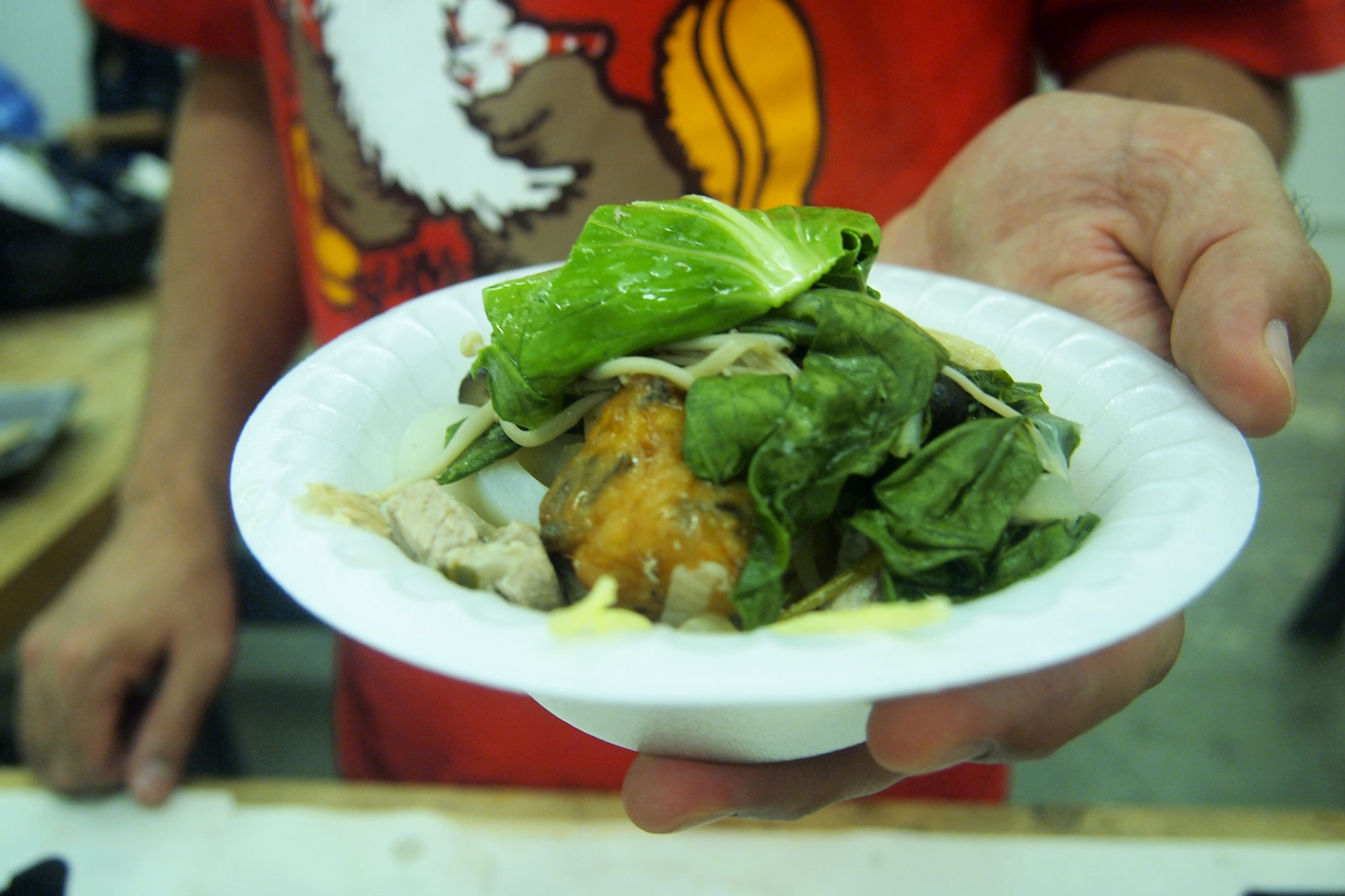As I followed Mat Kubo to the center of the industrial art room at the University of Hawai‘i at Mānoa, he showed me three different bubbling nabe, Japanese hot pots used to cook meats and vegetables. Each held a different broth, he explained, and each was a recipe from his grandma. As he pointed out the meats, chopped vegetables, and optional dipping sauce, he told me, “Grab a bowl and make yourself comfortable.”
But at first, I couldn’t help it—I was stiff and uncomfortable, a complete stranger invited to share a meal with other strangers in the room; a part of Kubo’s social experiment. The night was meant to cap off UH’s first summer school session, in which Kubo taught sculpting. It was also meant to bring friends, acquaintances, and strangers together to share a communal meal, reminiscent of a Honolulu-based project he did in 2008 and 2009 called Cook For Me, Cook For You. “I was doing studio-based work, and I was eating all my meals by myself, and I realized I needed to be with more people,” Kubo said. So he would go share nabe meals with others—some he knew, some he didn’t. Afterward, his work was displayed as an exhibition at the Honolulu Museum of Art’s Spalding House.
After nibbling on mushrooms I had just cooked, I saw a hand wave to me from across the room. “Hi there, come sit with us,” a man shouted. I sat down with him and two others nearby. At first, we started with the usual small talk, asking things like, “So what do you do?” It didn’t take long for us to begin talking about our personal lives, sharing stories and laughs, all reminiscent of a beachside family barbecue.

Kubo’s long-time artist friend Lisa Shiroma, who helped with preparation for the event, noticed something else throughout the night. “Everything is so fast-paced, and it’s hard to really sit down and have a conversation without whipping phones out and taking photos of food,” she said. “That was really nice, that people were so engaged with what was happening and eating and enjoying the whole experience of talking to another human being in person.”
Toward the end of the night, Kubo gathered everyone around the nabe pots for his favorite part of the meal. He said: “The broth at the end is now fortified with all the flavors and fats and essences from all the ingredients that’s been in there. I like to add rice and make a porridge at the end called zossui. That’s kind of even more of a metaphor of all our conversations and time together.”
Kubo has found something more profound than solely a fun meal behind the popularity of various hot pot cuisines. “We’re seeing it a lot more in restaurants and other groups and communes and organizations that promote more of this communal kind of dining, where we’re sharing conversation. It’s not just conversation but ideals. That’s what our society is based off of,” Kubo said. “Once we’re isolated and we feel like we’re living in our own shell, we number one feel alone, but number two, we don’t progress. … People are trying to find those places and find things that were kind of overshadowed over the years.”
The night went on longer than anyone anticipated, and I stayed much longer than I had planned. I was reminded of the importance of these human interactions and experiences. As Kubo put it, “It is beautiful to create these new, communal experiences that we all share together and can take away from.”

